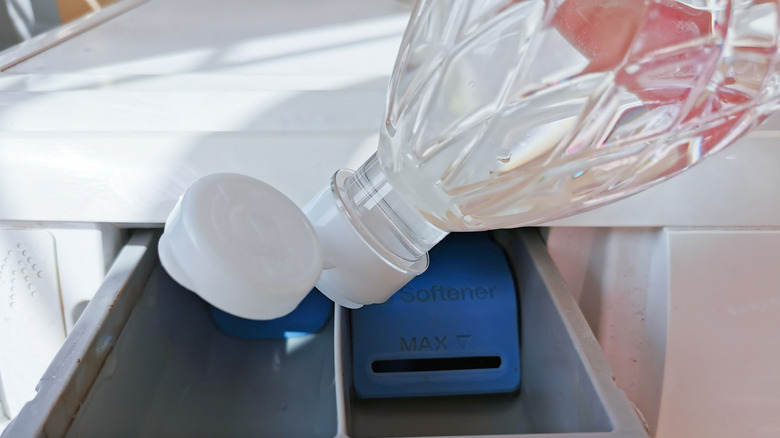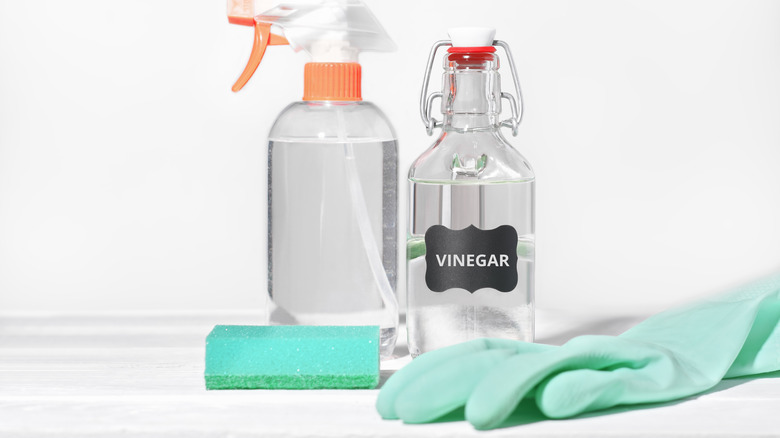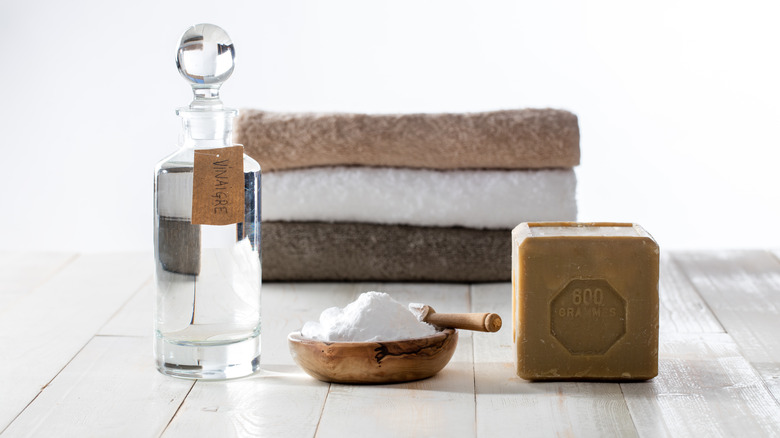Exactly Where And How You Should You Be Adding Vinegar To Your Washing Machine
Vinegar can be used as a versatile cleaning tool for both your laundry and your washing machine, as it's an affordable alternative to traditional fabric softeners and washing machine cleaning agents. It is also the preferred choice of many consumers with sensitive skin, because unlike traditional laundry products, vinegar does not contain harsh, irritating fragrances. With vinegar's many benefits, you might consider incorporating it into your laundry routine. However, when using vinegar in your washing machine, remember that adding it to the wrong component can cause damage.
Where and how you should add vinegar to your laundry will actually depend on whether you have a front-load washer or a top-load washer. When using vinegar as a fabric softener, those with front-load washers should add white distilled vinegar to the fabric softener compartment of their washer drawer. For top-load washers, add 1/2 cup of distilled white vinegar to the machine's dispenser during the rinse cycle. Regardless of your washing machine type, ensure that you never mix vinegar with bleach, as it will create toxic fumes.
How to use vinegar to clean your washing machine
Vinegar is not only a great fabric softener alternative, but also one of the best ways to clean your washing machine. To remove grime and build-up from a front-load washer, start out by spraying the rubber gasket with distilled white vinegar and wiping it down with a towel. Next, add two cups of vinegar to the detergent drawer. Set your washing machine to the hottest temperature setting and allow it to run for a full cycle. Finally, clear the vinegar from your washer by adding ½ cup of baking soda to the drum and allowing it to run for another cycle. Make sure that you use the hottest temperature setting for this as well.
To use vinegar to clean a top-load washing machine, you will need to add four cups to the drum and allow it to run on the hottest setting. Once the drum fills with water, pause the machine so that the acidic vinegar can work its magic. Allow the liquid to sit for one hour before restarting the washer. While the cycle is paused, use this time to clean the machine's components. Use a vinegar and water solution in a spray bottle to spray and wipe the washer's agitator and dispensers. After this wash cycle has completed, add 1 cup of baking soda to the drum and allow the washer to run on the hottest setting for one final cycle.
Keep this in mind before using vinegar in your washer
Now that you know exactly where to add vinegar to your washing machine for softer laundry and a cleaner washer, let's dive into a few tips to avoid damaging your clothing and your machine. First, keep in mind that you should use vinegar as a fabric softener no more than every other week. Even the experts warn that frequent vinegar washes can be too harsh on clothes. "Using too much vinegar over time takes a toll on your delicate fabrics," Whirlpool brand manager Morgan LaLonde told MarthaStewart.com. "It's best used when necessary to remain efficient and keep clothes in their best condition."
There are also risks associated with using vinegar to clean your washing machine. These cleaning sessions should not be a daily event because frequent use can corrode a washer. The kitchen ingredient is so acidic that it can also damage any rubber components, such as the gasket found in front-load machines. It is important to ensure that you properly dilute vinegar by using the previously mentioned measurements. If you pour too much into your washer at once, you increase the likelihood of damage.


